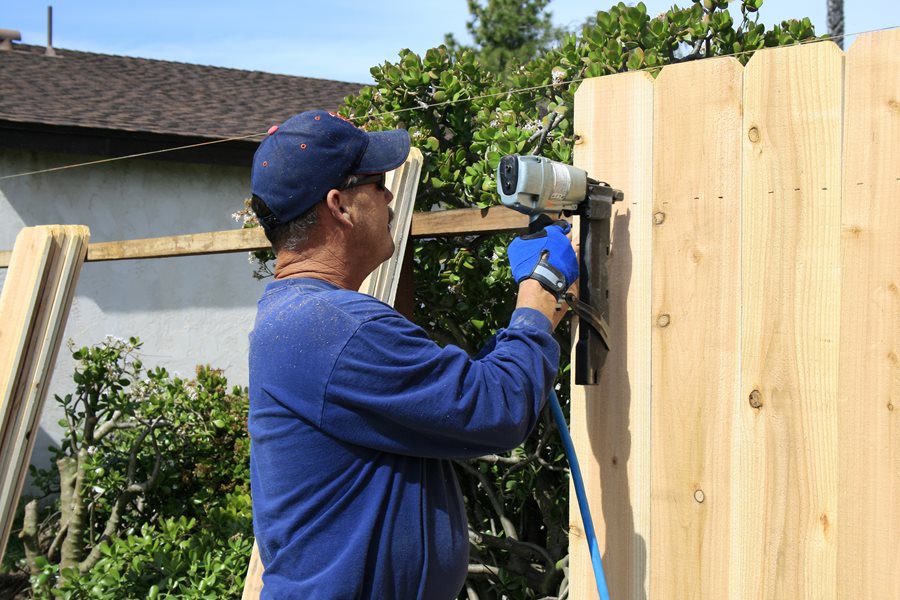Mastering the Art of Fence Installation: A Comprehensive Guide

Introduction
In the world of property ownership, security, and privacy are paramount. One of the most effective ways to achieve both of these goals is through fence installation. Whether you’re a homeowner looking to protect your family and property, a business owner seeking to secure your premises, or a developer aiming to enhance your project, the process of fence installation is of great importance. In this comprehensive guide, we will explore the ins and outs of fence installation, offering valuable insights, tips, and considerations for a successful project.

Planning Your Fence Installation
Before you embark on a fence installation project, it’s crucial to engage in thorough planning. Here are some key factors to consider:
-
Purpose: Determine the primary purpose of your fence. Is it for security, privacy, aesthetics, or a combination of these?
-
Property Lines: Know your property boundaries and local zoning regulations to avoid potential disputes with neighbors and legal issues.
-
Material Selection: Choose the right fencing material that suits your needs and budget. Common options include wood, vinyl, metal, and chain-link.
-
Style and Design: Select a fence style that complements your property’s aesthetics. Different styles include picket, privacy, ornamental, and ranch fencing.
-
Height: Decide on the fence’s height, which can vary depending on your specific requirements.
-
Maintenance: Consider the maintenance requirements of the chosen material and ensure it aligns with your lifestyle.
Hiring a Professional or DIY?
After planning your fence installation, the next decision is whether to go the do-it-yourself (DIY) route or hire a professional contractor. Both options have their pros and cons:
DIY Fence Installation:
Pros:
- Potential cost savings.
- A sense of accomplishment.
- Full control over the project.
Cons:
- Time-consuming and physically demanding.
- May lack the expertise needed for complex designs.
- Limited warranties and guarantees.
Professional Fence Installation:
Pros:
- Expertise and experience.
- Speed and efficiency.
- Warranties and guarantees for workmanship and materials.
Cons:
- Higher initial cost.
For many, the peace of mind that comes with hiring professionals often outweighs the potential cost savings of a DIY project.
Preparing for Installation
Before the fence installation begins, you’ll need to complete several important preparatory steps:
-
Utility Lines: Call your local utility companies to mark underground lines to avoid accidents and service disruptions.
-
Permits and Regulations: Check local regulations and obtain any necessary permits before commencing the project.
-
Clearing the Area: Remove any obstacles, debris, or vegetation in the path of the fence. This ensures a clean slate for installation.
-
Layout and Marking: Mark the fence line with stakes and string, ensuring it follows your property boundaries and design specifications.
The Fence Installation Process
The actual installation process can vary depending on the type of fence you’re building. However, there are some general steps that apply to most installations:
-
Setting the Posts: This step involves digging holes for the fence posts and setting them in concrete. Proper alignment and spacing are crucial.
-
Installing Rails: Once the posts are in place, attach horizontal rails that will support the fence panels or pickets.
-
Attaching Panels or Pickets: The next step is to attach the fence panels or pickets to the rails. Ensure they are level and securely fastened.
-
Gate Installation: If your fence includes a gate, it must be installed correctly to ensure functionality and security.
-
Finishing Touches: Depending on your choice of material, you may need to apply a finish, paint, or stain to protect and enhance the appearance of the fence.
Maintenance and Care
Proper maintenance is essential to ensure the longevity and functionality of your fence. Here are some general tips for fence maintenance:
-
Regular Inspection: Periodically inspect your fence for damage, loose components, or signs of wear.
-
Cleaning: Clean the fence as needed, removing dirt, mildew, or stains. The cleaning method will depend on the fence material.
-
Repairs: Address any issues promptly. Repair loose boards, damaged posts, or broken hardware to prevent further damage.
-
Sealing and Painting: If your fence requires it, reseal or repaint it as recommended to protect it from the elements.
Conclusion
Fence installation is a valuable investment that can enhance your property’s security, privacy, and aesthetic appeal. While the planning and installation process may seem daunting, the results are well worth the effort. Whether you choose to tackle the project on your own or hire a professional, remember that quality workmanship and proper maintenance are key to the long-term success of your fence.
For those seeking professional fence installation services in Texas, Lone Star Fence & Construction is your trusted partner. With years of experience and a commitment to quality, they can transform your vision into reality. Contact Lone Star Fence & Construction today to embark on your journey toward a more secure and beautiful property.





